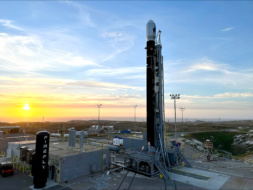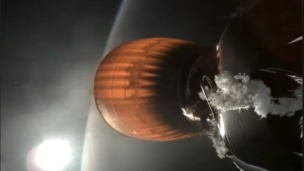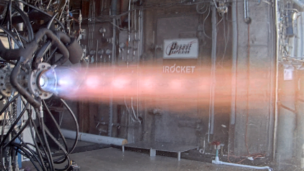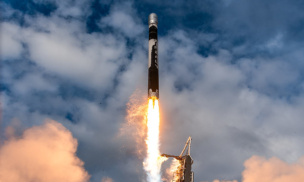Rook can’t get enough of space.
At least, that’s the vibe we’re getting from Jared “Rook” Isaacman, the billionaire CEO of Shift4 Payments and commander/financier of Inspiration4. Yesterday, Isaacman announced that he’d purchase three additional crewed spaceflight missions from SpaceX. The trio of missions, dubbed the Polaris Program, is slated for launch in late 2022 and 2023.
Isaacman isn’t known for shying away from ambitious mission goals, and Polaris is no exception. All three Polaris missions are funded by SpaceX and Isaacman personally, Isaacman said in a press conference yesterday. He declined to reveal how program costs were split up.
Mission I: Polaris Dawn, the first mission of the bunch, is scheduled for launch in Q4 2022. The mission will launch on a Falcon 9/Crew Dragon combo and last for up to five days.
SpaceX announced its first very own astronaut corps in the Polaris Dawn crew:
- Jared Isaacman (of course) as mission commander.
- Scott Poteet, a retired US Air Force lieutenant colonel, as mission pilot. Poteet, a close confidant and business associate of Isaacman, was mission director of Inspiration4.
- Sarah Gillis, a SpaceX lead space operations engineer, will serve as Polaris Dawn’s mission specialist.
- Anna Menon, also a SpaceX lead space operations engineer, will serve as the other mission specialist and medical officer. (Fun fact: Menon is married to Anil Menon, a member of NASA’s 2021 astronaut class. Talk about a power couple.)
Polaris Dawn aims to reach the highest Earth orbit ever flown. That record is currently held by Gemini XI at an altitude of 1379 km (~857 mi). Up that high, the radiation environment is much more powerful, and SpaceX will need to factor in how to protect the astronauts aboard Crew Dragon from radiation exposure.
And the ambitious plans don’t stop there. SpaceX plans to conduct the first ever commercial spacewalk from Polaris Dawn, too. Crew Dragon doesn’t have an airlock, so the entire cabin will need to be depressurized before a crew member can step outside. And for that extravehicular activity (EVA), SpaceX is working on a new spacesuit design.
- Polaris Dawn will also perform some science and tech experiments, including testing laser communication capabilities with Starlink satellites for the first time. In-Dragon WiFi, anyone?
- SpaceX has maintained that laser comms will be vital for future missions to Mars.
Mission II: The second Polaris mission will also launch on a Falcon 9 and Crew Dragon. Not much information has been released about Mission II yet, but we can expect some variation on the laser comms, science, and human spaceflight cornerstones of the first.
Mission III: The last Polaris mission will be—drumroll please—the first crewed flight of Starship. The timing for that flight is still up in the air. Isaacman said in the press conference that the goal is to gain “an awful lot of experience with Starship” through non-crewed, low-Earth orbit flights before loading any humans into the super-heavy rocket.




